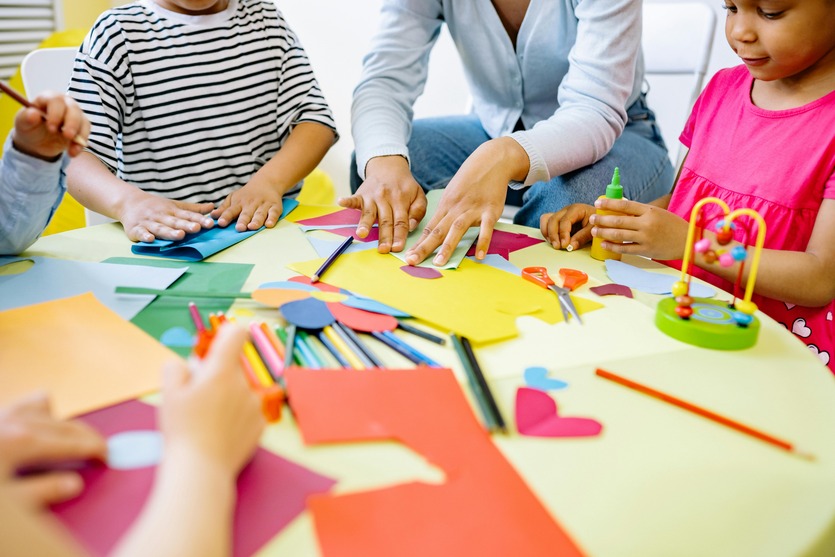Discover 8 simple parenting tips to foster creativity in your preschooler and help unlock their imagination and problem-solving skills.
Here are 8 simple parenting tips to foster creativity in your preschooler that are easy to follow and can have a lasting impact.
1. Encourage Open-Ended Play
Children love to explore and play, but sometimes we unknowingly limit their creativity by giving them toys with fixed purposes, like puzzles or action figures. Instead, offer toys that let them imagine their own stories, like building blocks, clay, or even old household items like cardboard boxes and kitchen utensils.
Why it Works: Open-ended play helps your child think beyond the usual, making them more imaginative and resourceful.
2. Create a Creative Space
Give your preschooler a small corner at home where they can express themselves freely. Whether it’s for drawing, painting, or building with blocks, this space should be theirs to explore without worrying about making a mess.
Why it Works: Having a dedicated space for creative activities encourages your child to get into a routine of exploring their imagination.
3. Allow for Messy Play
We all know how messy things can get when kids are involved, but that’s okay! Let them get their hands dirty with activities like painting, playing with mud, or molding clay.
Why it Works: Messy play stimulates your child’s senses and lets them experiment without limitations. It’s a great way to spark creativity while helping their cognitive development.
4. Ask Open-Ended Questions
Asking your child open-ended questions encourages them to think in new ways. For example, instead of asking, “Do you like this drawing?” try asking, “What else can you add to your drawing?” or “What story does this picture tell?”
Why it Works: Open-ended questions help your child think deeper and develop problem-solving skills, making them more confident in their creative process.
5. Expose Them to Different Art Forms
Introduce your preschooler to different forms of art. This could be anything from painting and drawing to dancing, storytelling, or even music. Let them explore a variety of creative activities and see what sparks their interest.
Why it Works: Exposure to different forms of art gives your child more ways to express themselves and helps them develop new skills.
6. Encourage Storytelling
Storytelling is a powerful way to foster creativity in your preschooler. Encourage them to create their own stories, whether they’re based on their daily experiences or completely imaginary. You can also read books together and ask them to predict what will happen next.
Why it Works: Storytelling helps build your child’s imagination and improves language skills, while also allowing them to think creatively.
7. Provide Opportunities for Real-Life Exploration
Take your child outside for nature walks, trips to the zoo, or even a visit to the local market. Real-life experiences expose them to new sights, sounds, and ideas, which can fuel their imagination.
Why it Works: Real-world exploration helps your child connect with their surroundings, inspiring creativity through observation and curiosity.
8. Praise the Process, Not Just the Outcome
When your child creates something, whether it’s a drawing, a story, or a tower of blocks, make sure to praise their effort, not just the final result. Compliment their imagination and the way they tried something new, rather than focusing on how “good” or “bad” the outcome is.
Why it Works: By valuing the creative process, you build your child’s confidence and encourage them to keep experimenting, which will help their creativity grow over time.
Conclusion:
Creativity is more than just making art—it’s about thinking differently, solving problems, and finding joy in the process. By following these parenting tips to foster creativity in your preschooler, you can help your child grow into a confident, creative thinker. And the best part? These tips are simple and can be easily integrated into your everyday routine.
Nurturing creativity in your little one is one of the greatest gifts you can give them. So, go ahead and let them explore, imagine, and create—the results will amaze you!
FAQs:
Q1: How do I balance creativity and academics for my preschooler?
A: Creativity and academics can go hand in hand. Try integrating creative activities into their learning. For example, you can use storytelling to teach language skills or let them build things with blocks to learn basic math concepts. Making learning fun and creative ensures your child enjoys both.
Q2: My child isn’t interested in art. How can I foster creativity in other ways?
A: Creativity isn’t just about drawing or painting. You can encourage creativity through music, dancing, pretend play, or building things. Even helping you cook in the kitchen can be a creative activity! The key is to let them think and explore new things.
Q3: How can I encourage creativity without overwhelming my child?
A: Let creativity happen naturally. Don’t force creative activities on your child—just offer them opportunities to play and explore. Sometimes, simply providing the right materials like crayons or building blocks is enough to inspire creativity at their own pace.
Q4: What if my preschooler gets frustrated with creative activities?
A: Remind them that it’s okay to make mistakes and that creativity is about trying new things. Encourage them by praising their effort rather than focusing on the outcome. If they need a break, that’s perfectly fine too!
Q5: Can I foster creativity on a budget?
A: Absolutely! You don’t need expensive toys or supplies to foster creativity. Everyday household items like old newspapers, cardboard boxes, and even nature (like leaves and rocks) can be used for creative play. DIY crafts and outdoor exploration are also great ways to inspire creativity on a budget.




